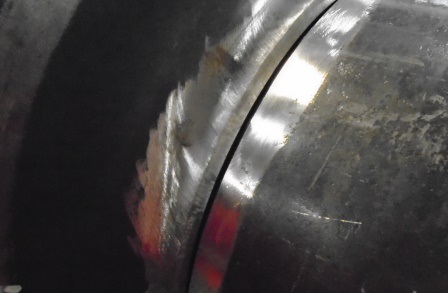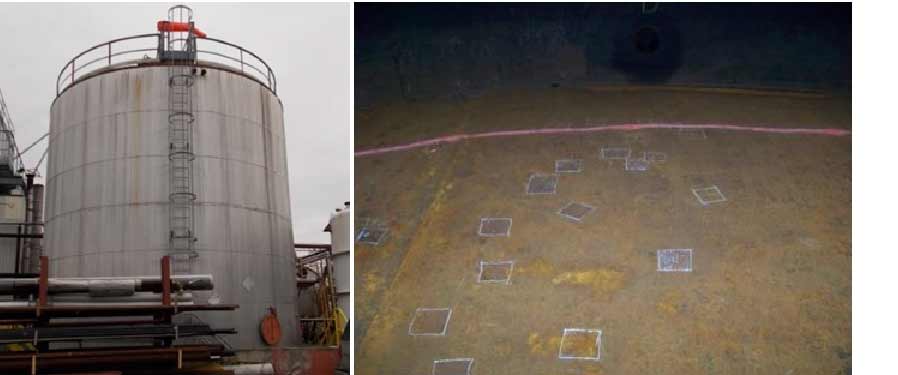How Tank Welding Inspection Stops Future Structural Failings

Recognizing the Relevance of Rigorous Tank Welding Examination Processes in Preventing Failings and Enhancing Life-span
In the world of commercial operations, the importance of rigorous tank welding inspection processes can not be overstated. By implementing different inspection techniques, organizations can spot defects early, thus staying clear of expensive consequences and expanding the life of their storage space tanks.
Value of Welding Inspections
Identifying the essential duty of welding evaluations in keeping structural stability, these processes guarantee that welds meet established criteria and requirements - Tank Welding Inspection. Effective welding inspections are extremely important in the building and maintenance of containers, as they directly impact the resilience and security of the structures. By identifying prospective deficiencies, such as improper strategies or material defects, inspections mitigate the risk of catastrophic failures
Welding inspections encompass numerous techniques, including aesthetic assessments, non-destructive testing (NDT), and assessments of welding procedures. Each method offers to verify the high quality and compliance of welds with industry policies, therefore safeguarding both personnel and ecological rate of interests. Routine inspections foster a culture of accountability and quality within the labor force, guaranteeing that all team participants stick to best methods.
Additionally, these assessments add to the general lifecycle monitoring of tanks by recognizing wear or degradation early at the same time. By dealing with these concerns proactively, companies can expand the operational life expectancy of their possessions, eventually resulting in cost savings and enhanced integrity. In summary, the importance of welding assessments can not be overstated; they are important for ensuring security, long life, and conformity in tank construction and maintenance.
Usual Root Causes Of Tank Failings
Comprehending the common root causes of storage tank failings is vital for preventing disastrous occurrences and guaranteeing the long life of storage systems. One common root cause of storage tank failure is corrosion, which can substantially compromise the structural honesty of containers in time. Ecological aspects, such as exposure to dampness, chemicals, and temperature variations, can accelerate this process.
An additional essential factor is improper welding methods, which might lead to problems like cracks or insufficient joints. These concerns can endanger the storage tank's stamina and bring about leaks or tears. Furthermore, insufficient maintenance techniques can lead to unnoticed deterioration, ultimately boosting the threat of failure.
Design imperfections, including poor thickness or bad material selection, can additionally add to storage tank susceptabilities. Moreover, operational elements, such as overfilling or direct exposure to extreme stress, can stress the tank beyond its desired limits.
Secret Examination Strategies
Reliable evaluation methods play a crucial function in minimizing the dangers connected with storage tank failures. A detailed method to container welding examination involves a number of key strategies, each created to recognize prospective issues and make sure architectural stability.
Aesthetic evaluation stays the first line of protection, enabling inspectors to recognize surface abnormalities such as fractures, corrosion, or misalignment. This method is typically supplemented by non-destructive testing (NDT) approaches, which are vital for assessing weld high quality without endangering the container's stability.

In addition, magnetic fragment testing (MPT) and dye penetrant testing (DPT) work for detecting surface flaws in ferromagnetic products and non-porous surfaces, specifically. Each strategy has its strengths and limitations; therefore, a combination of techniques is typically employed to accomplish thorough assessment results.
Benefits of Extensive Assessments
While the immediate expenses of rigorous examinations may seem complicated, the long-lasting benefits considerably surpass these initial investments. Executing detailed examination refines not only improves the integrity and safety of tank structures yet also minimizes the danger of catastrophic failures that can cause significant economic losses and environmental harm.
Rigorous inspections assist identify prospective issues early in the welding process, enabling for prompt restorative actions that prevent pricey repair work or substitutes down the line. This aggressive method fosters a culture of quality guarantee, where adherence to ideal methods comes to be ingrained in functional treatments. Furthermore, routine assessments basics add to enhanced possession durability, as they guarantee that containers stay in optimum condition throughout their life-span.
In enhancement, the paperwork produced from these assessments works as an important resource for upkeep preparation and performance assessments. This data-driven approach can also boost functional efficiency, resulting in reduced downtime and enhanced productivity. Inevitably, rigorous assessments not just protect the structural integrity of tanks however additionally offer significant economic benefits, strengthening the idea that buying high quality guarantee is a sensible choice for any type of organization included in container operations.
Regulative Criteria and Conformity
Regulative criteria and conformity are necessary parts of container welding examination procedures, as they develop the framework for ensuring security and quality in procedures. Conformity with these standards not just minimizes threats but likewise improves the total stability of bonded frameworks. Different organizations, including the American Culture of Mechanical Engineers (ASME) and the American Petroleum Institute (API), provide guidelines that dictate appropriate methods for welding, inspection, and screening.
These criteria mandate making use of certified personnel, the execution of rigorous assessment protocols, and adherence to particular welding procedures. By lining up with regulatory demands, companies can make sure that their tanks satisfy the required safety and security and efficiency requirements, thereby decreasing the chance of catastrophic failings that can result in considerable financial losses and ecological damages.

Moreover, regulative compliance cultivates a culture of accountability and continual enhancement within the welding and manufacture markets (Tank Welding Inspection). Regular audits and evaluations ensure that methods continue to be aligned with advancing criteria, thereby promoting long-lasting integrity and operational efficiency. Inevitably, adherence to regulatory standards not only shields properties however additionally boosts the life expectancy of welded tanks, guaranteeing they offer their desired purpose effectively in time
Conclusion
To conclude, strenuous storage tank welding assessment procedures play an important function in preventing failings and extending the life expectancy of storage frameworks. you can try here By determining possible deficiencies via various examination methods, companies can minimize dangers related to storage tank honesty. The implementation of these evaluations fosters a society of top quality guarantee, causing boosted possession longevity, lowered upkeep expenses, and enhanced functional effectiveness. Adhering to regulative standards even more highlights the significance of these examinations Visit This Link in preserving security and integrity within the sector.